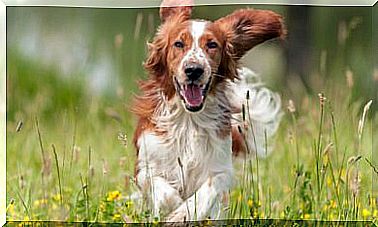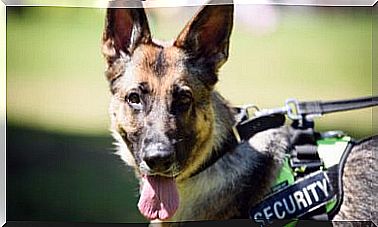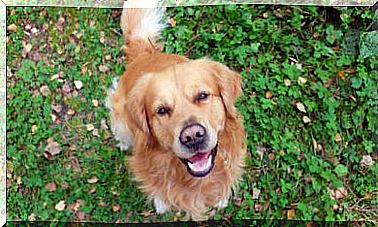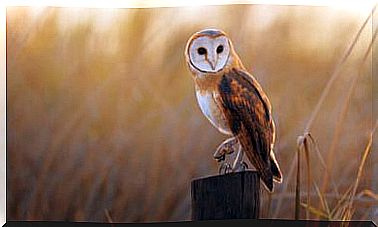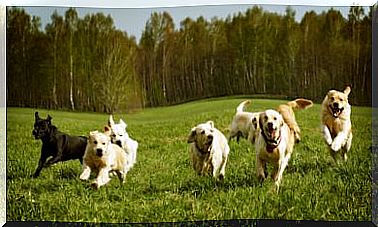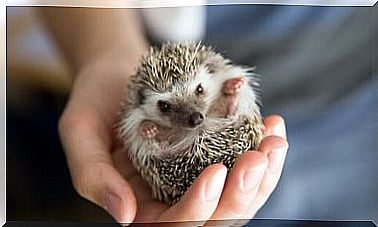Training Of Noble Guide Dogs
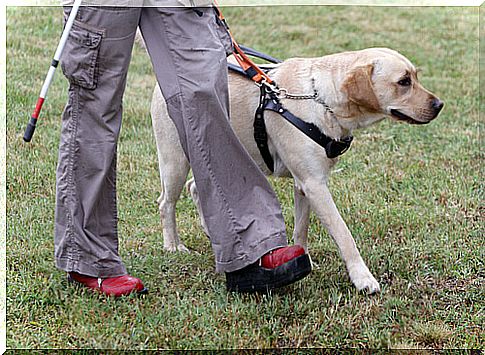
Over time we have seen how dogs have the ability to carry out various functions that help improve our lives. One of the best known and most valued is the one made by guide dogs. They are the eyes of those who do not see, and they always remain calm no matter what is happening around them. Have you ever wondered how they train them? We will tell you!
In Spain, the Once Guide Dog Foundation is in charge of training these noble animals, which greatly facilitate the lives of the blind. However, these guide dogs exist all over the world and the training is very similar. You are sure to love knowing how it works. Let’s see!
Guide dog training process
As everyone knows, not all dog breeds are suitable for this task. For this reason, a type of dog that has special characteristics is selected. Although as a general rule we always see the Labrador or the Golden Retriever, there are other breeds that are used as long as they meet these personality requirements:

- Desire to please its owner
- A high sense of responsibility
- Perseverance, not giving up easily
- Initiative and resolution
- Adaptability. This implies adapting to the environment and the changes that may occur in it.
- Protective instinct
Once this has been verified, let’s see what type of training they receive, as it is an exhaustive training that, as we see, is very useful because all these animals perform their work wonderfully.
Harness
The harness will be the way in which the person can tell the dog what he wants from him, and in which the dog will tell its owner where and how to go. Therefore, in this case, both must learn to wear and use it. The normal thing will be that the dog goes to the left with the majority of the body in front of the person, since it is the one who takes the lead in the walk.
In order for both to understand each other, they are taught to exchange tension without force through the harness.
The straight line
Even if a person is blind, it is she who is responsible for guiding herself and, although a lot of responsibility falls on the dog, most of it belongs to the person himself, since one should not trust “blindly” in the only capacity of the animal to do so.
Walking without a guide dog is different from doing it with this one, since a blind person without a guide will have to touch everything to know where they are going. However, the guide dog is trained to do it in a straight line and, in this way, there are as few obstacles as possible on the road.
The dog will always walk in a straight line until instructed otherwise, or until a change in the environment causes him to modify the route: for example, a curb, a lamppost or a person.
Curbs
Curbs can be a challenge for the blind, so guide dogs must be very well trained for this. It must mark the presence of a curb through an approach, that is, the animal will stop and sit down so that the person knows what to do with the gesture of going down a step.
In the case of stairs, the dog will stop standing at the base of the stair when it is going down, and will put both front legs on the first step when it is going up.
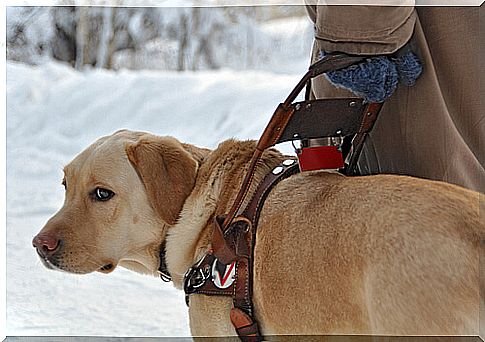
Obstacles and traffic
When it is trained with the harness, the dog must understand that this is like an enlargement of the body of the person who wears it, so when an obstacle has to be overcome there must be enough space for the two to fit.
In the case of nearby traffic the dog will ignore orders to move forward. When it is further away, the canine will stand or sit and wait until the vehicles have passed. However, the person must use their hearing to know when is the correct time to cross, since the capacity of the animal is limited.
Distractions
Guide dogs are the eyes of the blind and must be aware of them all the time, since carelessness could be fatal. Therefore, these dogs are trained not to be distracted. No matter what happens in the environment, you must stay focused. It is recommended that when we see these dogs we do not call them to pet them, unless they are in a relaxed situation and always asking the owner for permission.
Who knows nobler animals than these dogs who are willing to go through hard training and then be selfless and give their lives to protect their owners? Without a doubt, we cannot say more than thank you!
